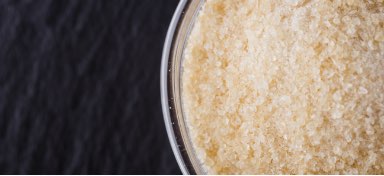
THE HISTORY OF GELATIN SILVER PRINT PHOTOGRAPHY
Long before digital cameras and smartphones existed, people only had the option of practicing traditional film photography – though they just called it photography back then. Taking photos and developing them was a highly complex process, with the wet collodion process being the most popular.
In wet collodion development, the light-sensitive emulsion must be prepared by the photographer, then poured over glass plates immediately before exposure. If it hardened before you could expose the plate and take the photo, you would have to repeat the process over again. In 1871, British photographer Dr. Richard Leach Maddox invented the very first form of silver gelatin emulsion. This method was improved upon throughout the 1870s by Maddox to ensure the film could have a long shelf life and be easily used by customers with only baseline skill levels. By 1888, with the invention of Eastman Kodak’s commercial celluloid film, photographers were able to take beautiful, high-quality black-and-white pictures using the gelatin silver print process.
Gelatin silver print photography started gaining popularity in the 1890s, but it wasn’t until the 1920s and 30s that the glossy print surfaces of silver gelatin photos were deemed desirable. Gelatin emulsion was propelled into the mainstream by the advent of photojournalism, where black and white silver gelatin photos helped headlines make more of an impact and pushed stories further than ever before. The gelatin silver print process for photography was used for a significant amount of time within the industry. However, silver gelatin photos began to lose popularity once other, more advanced technology such as color prints and digital images were invented and introduced into the world.
WHAT IS A GELATIN SILVER PRINT & HOW DOES THE PROCESS WORK?
The gelatin silver print process is an incredible process that utilizes the best of light and chemistry to create art. At its core, the gelatin silver process is about reducing light-sensitive silver salts suspended in a gelatin emulsion into pure silver. After the silver salts, or silver halides, are suspended in the flexible gelatin emulsion, it’s then coated onto a transparent base to make a film. Because these silver salts are suspended within the gelatin emulsion, it gives the film an incredible shelf life. Once exposed to light, a latent image of pure silver forms on the surface, which you can transfer to paper via an enlarger, which can be developed with the help of film developers.
HOW THE GELATIN SILVER PROCESS IS STILL USED TODAY
While newer and more technologically innovative methods allow people to capture and preserve images, the gelatin silver process is still the most well-beloved and frequently used method for black and white film photography. It is still sometimes used in modern analog color photography, as well. Today, the gelatin used to create silver gelatin photos is primarily made from crushed beef bone, which has the most natural photographic materials of any raw gelatin product. This gelatin is used in three of four layers to form the structure of modern gelatin silver print photography.
The current gelatin photography layer structure is as follows:
- Gelatin developing out paper (DOP) base: Acts as support to which the subsequent layers are attached
- Baryta: A white opaque coating of barium sulfate and gelatin that forms a smooth surface on which to coat the gelatin
- A gelatin binder: Holds the silver grains in place
- A gelatin topcoat: Protects the image by providing superior resistance to the surface
Due to its immense versatility, gelatin can be used within a variety of industries that include ballistics, baking, health & wellness and more. However, it particularly has value in the field of photography for manufacturers of photographers’ formulary gelatin. Formulary gelatin is used to prepare silver gelatin emulsions — the light-sensitive layers that capture images in traditional photography. Without it, the high-quality, glossy black-and-white photographs sought after by photographers would not be possible.
A RECAP OF THE GELATIN SILVER PRINT PROCESS
While many people may be unaware of the significance of gelatin in historical and contemporary photography, its importance cannot be overstated. The gelatin silver print process allowed photography to become more mainstream and accessible to people worldwide, ushering in a new life-changing medium to produce art and spread awareness of events. If beef gelatin were never used to bind silver halides to gelatin emulsion, many of the valued images we have today dating back from the 1870s would not have been maintained and visible for us to see in the modern world. To recap the important points we covered:
- The gelatin photography process was created in the 19th century and is known as the gelatin silver process.
- The early gelatin silver process involved coating paper or film in a gelatin emulsion, which was a mixture of gelatin and salt.
- The process was refined as time went on into the four-layer structure still used in traditional photography today.
- Layers used in today’s gelatin photography include a gelatin emulsion layer containing silver halide crystals, a top coating layer, a sub-coating layer and an anti-halogen and non-curl layer.
Shop Custom Collagen Today
Custom Collagen can provide your manufacturing facility with all the collagen and gelatin products necessary to create the high-quality photographers’ formulary silver gelatin used in the gelatin silver print process. We offer top-rated, high-quality silver gelatin for photography to consistently produce the best gelatin emulsion for exquisite silver gelatin photos. Custom Collagen provides our formulary silver gelatin in bulk orders of all sizes so you can find the exact amount you need for your desired application. Shop pure gelatin for all your photography needs at Custom Collagen today.
If you have questions about our formulary gelatin emulsion product offerings for your gelatin silver print photography, contact us today.



